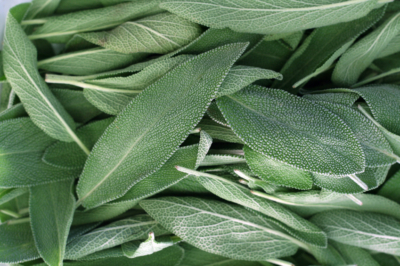To be able to harvest sage properly, it requires a little background knowledge. Anyone who gets to grips with the evergreen half-shrub carelessly with scissors will, in the worst case, forfeit the entire plant. We explain in a practical way what is important for professional harvesting.

Continuous harvesting brings advantages
As a classic half-shrub, sage grows woody in the lower part and herbaceous in the upper part. The fresh, herbaceous shoot, which thrives every spring, is suitable for consumption or the numerous other uses. Unless this part is pruned, lignification gradually sets in here. Harvesting and cutting thus go hand in hand with this Mediterranean labiatae. The advantages at a glance:
- continuous harvesting reduces the degree of lignification
- herbaceous shoot tips are encouraged to branch out
- a rich yield is available for stockpiling
If you harvest sage correctly according to these instructions, you thus kill several birds with one stone. Optionally, both fresh and preserved sage are available for the desired processing. At the same time, each harvest serves to maintain vitality and prevent excessive lignification.
Step-by-step instructions for bed and balcony.
With the start of the growing season, the first fresh shoot tips appear in May at the latest, inviting spicy enjoyment. Now there is no stopping sage lovers, because the time of harvest can begin. This is how you proceed:
- Gently rinse the herb plant in the afternoon of the day before.
- the next day wait until the dew has evaporated
- then in the late morning cut off the herbaceous tips of the shoots
- in no case cut the woody part of the plant
What you do not process fresh, is for storage. Sage is excellent for drying and freezing.
Harvest just before flowering premium quality.
Starting in June, sage strives to bloom. In the days before, the aroma content in the leaves is at its highest level, only to drop significantly thereafter. At this time at the latest, the plant should be harvested all around so that the premium harvest quality is not lost. If the formation of seeds is not desired, experienced hobby gardeners cut off the inflorescences in connection with the harvest.
Last harvest in August
In mid to late August, this year’s harvest of sage ends. Thanks to this prudence, you save the plant from wintering damage, because all the branches can mature in time before the first forest. In addition, the remaining branches serve as effective winter protection.
Tips & tricks
If a sagebrush comes into bloom, the leaves are far from lost for useful use. Although the aroma content is significantly reduced, the valuable tannins and flavonoids remain in the leaves. These components contribute significantly to the fact that sage has served as a medicinal plant for centuries.

